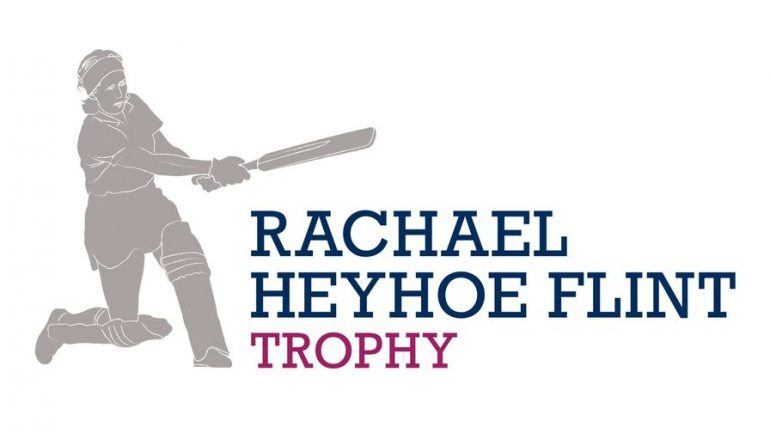Let’s start by calling this tournament a raging success, then see if we can pick any holes in it.
Aim
The first target was to get some meaningful cricket in before it was too late in the year.
Method
The ECB had already decided on the eight hubs that would be the future building blocks of women’s elite cricket in England. They were a vital addition between county and international levels. The former had remained too unwieldy, failing to act as a reliable step on the ladder towards England standards. Amateur players couldn’t find enough time to play regular cricket and work on their skills. Levels of performance varied too much. These had led to the sense of an elite cut off from the rest of the nation’s players.
All the hubs (or franchises) were newly formed, centred on first-class counties and drawing in neighbouring counties to ensure that other promising players had the chance to demonstrate their prowess.
Head coaches had little time to build their squads and formulate their plans, but they achieved them mightily. Elite players were moved around the country to even things up as much as possible. In the event it was the Sunrisers at Chelmsford who looked the most vulnerable. Even so, their players put in some worthy performances, but it was disturbing to read on 15 September that they were looking to appoint a Women’s Cricket Operations Executive.
There is an inherent weakness in franchises, identity. Players are drawn together from far afield. In a perfect world their names wouldn’t be drawn out of a hat to come together for such a limited period. Spectators (when they are allowed to exist) enjoy the sense of local partisanship that comes from seeing familiar faces performing great deeds together. But needs must…
Status
The award of retainers made a startling difference to the players involved. It offered them some security in the game and a recognition of their worth. It meant too that they could afford the time to play more cricket. That lack had been a central block on progress. Now matches could take place in midweek, helping to intensify the whole experience.
Format
50-over games were exactly what was needed. They have given the players the time and space to develop their skill-sets to produce the level of cricket needed at the top of the game.
Bridging the gap between levels
In broad terms there are now four tiers of cricket for women: club – county – regional hub – national. Each step-up means a huge advance in quality for every player. The gap between county and national levels had been too great. That new intermediate one is a vital extra cog in the England machine, one that was overdue. The pathway from beginner’s stage (at school or club) to an international cap should now be straight and well lit.
Selectors have been able to take a long hard look at the talent available. Of the group of more experienced players, three captains made memorable interventions: Georgia Adams (Vipers) had a wonderful series with the bat and added testing overs of off-spin. Sophie Luff (Storm) likewise scored heavily and bowled useful overs. Tash Farrant led her Stars with great skill, marshalling her uneven forces with wide-awake decision-making. Her bowling too was back to its international best.
At the other end of the scale teenagers entered the fray like a breath of fresh air. Ella McCaughan, close to her 18th birthday, looked very composed in scoring three 50s. the 16-year-old Grace Scrivens made a bold 72 late in proceedings. Nat Wraith added her name to the list of highly promising keepers the country possesses.
To repeat a point made in the past: the absence of overseas players has been totally beneficial. it’s all very well saying that such-and-such an Australian/South African/New Zealand star had a great effect on everyone in the dressing-room, but in the KSL their presence on the field – batting or bowling – denied English hopefuls the chance to shine. One overseas player who did make a positive mark was Sterre Kalis, the young Dutch cricketer who has played in Australia. Her presence was a reminder of how the ICC needs to support tier-2 nations to the hilt.
One major difficulty – partly the fault of the pandemic – is bridging the gap between hub level (results in the RHF Trophy) and international acceptance. Even if Covid-19 had not visited us, would any of the top players in the trophy have been invited along to Loughborough to test their abilities?
Another difficulty is familiar to women’s sports that are introducing professionalism: how to occupy the England players when they are not competing internationally – which is most of the time. They must be brought back into the national system, whatever form that will take in the future; but then their standards may well be too much for their amateur opponents. They dominated the first two rounds, showing how vital it is for the quality gap to narrow.
Performances
Over the six group rounds teams were composed in three different ways: in the first two everyone was available; then the England training squad bubbled in Loughborough; finally the players not selected for the squad to face the West Indies returned to strengthen their sides.
On the field the performances speak for themselves. The weather was mostly kind; the batters made hay; bowlers stuck to their task well; players at every level of experience seized their chance to shine. This is exactly what the brains at headquarters had been hoping for. They deserve huge congratulation.
The Leading Stats in the Group Matches
Batting (6 innings only)
Georgia Adams 420 runs average 84.00 highest score 154*
Sarah Bryce 395 runs average 79.00 highest score 136*
Sophie Luff 339 runs average 67.00 highest score 104*
Eve Jones 334 runs average 66.00 highest score 115*
Adams went on to reach exactly 500 runs in the final.
Six hundreds were scored:
In addition to the four above:
Georgia Hennessy 105 (she also had an analysis of 4-31; the outstanding all-rounder performance)
Nat Sciver 104
Loughborough Lightning made the highest total, 303-5. The lowest, 98, was registered by South East Stars. Both those sides experienced the other end of the scale: Stars also made 289-9; Lightning 116!
Bowling (minimum 20 overs)
Charlotte Taylor 9 wickets at 13.11
Dani Gregory 5 wickets at 14.80
Lauren Bell 7 wickets at 15.43
Kathryn Bryce 14 wickets at 15.43
Two bowlers took 5 wickets in an innings:
Katherine Brunt 5-20
Kathryn Bryce 5-29
But Alex Hartley’s analysis of 10-5-8-4 against Lightning is the most startling of all.
Charlotte Taylor finished the series with the most wickets: 15 at 10.13; Her 6-34 in the final outdid the two 5-fers above.
Coverage
The series was widely covered, though not consistently. This was a vital ingredient in the organisers’ recipe – to make the women’s game accessible to the widest possible audience. So matches were televised, live-streamed and broadcast on radio. There was considerable variety in the quality available – in camera-flexibility, commentating skills and so on – but the overall impression was one of huge willingness to create a winning spectacle.
It would be fascinating to discover the viewing and listening figures across the various media outlets.
With the England-West Indies series running concurrently, the Trophy helped to redress the deprivation all lovers of the game had suffered during the long summer of NO CRICKET!









